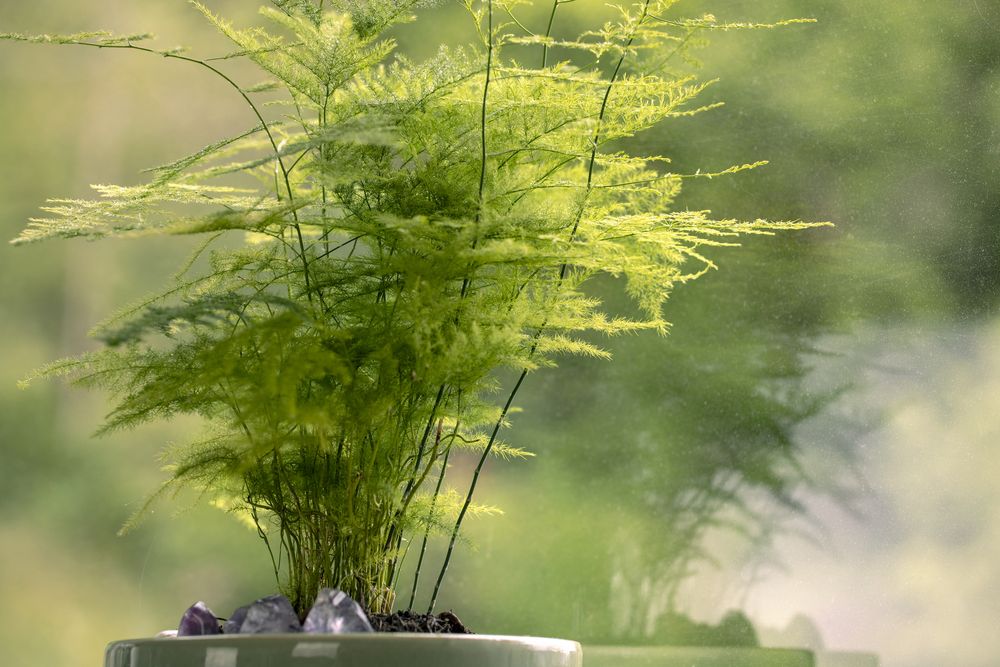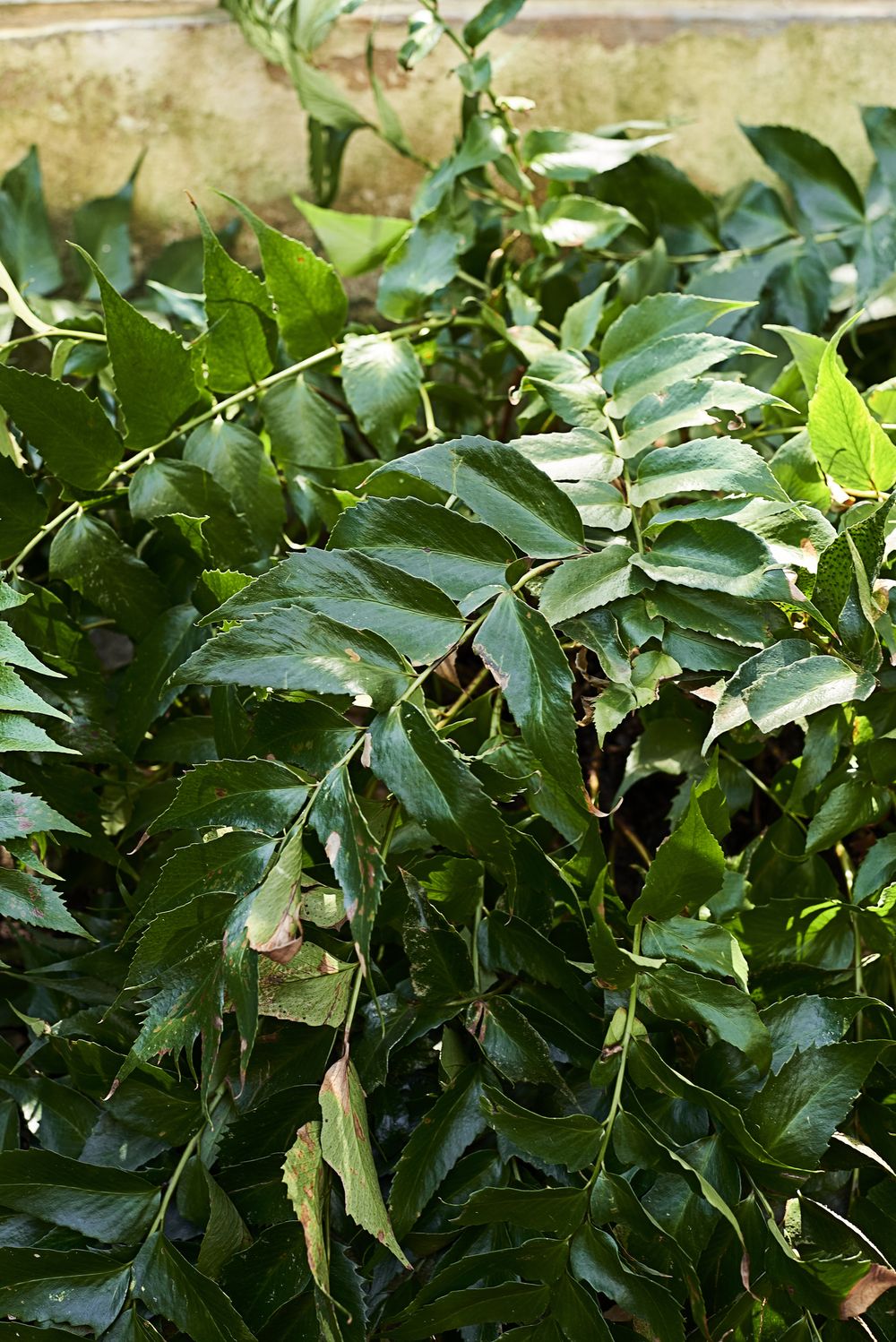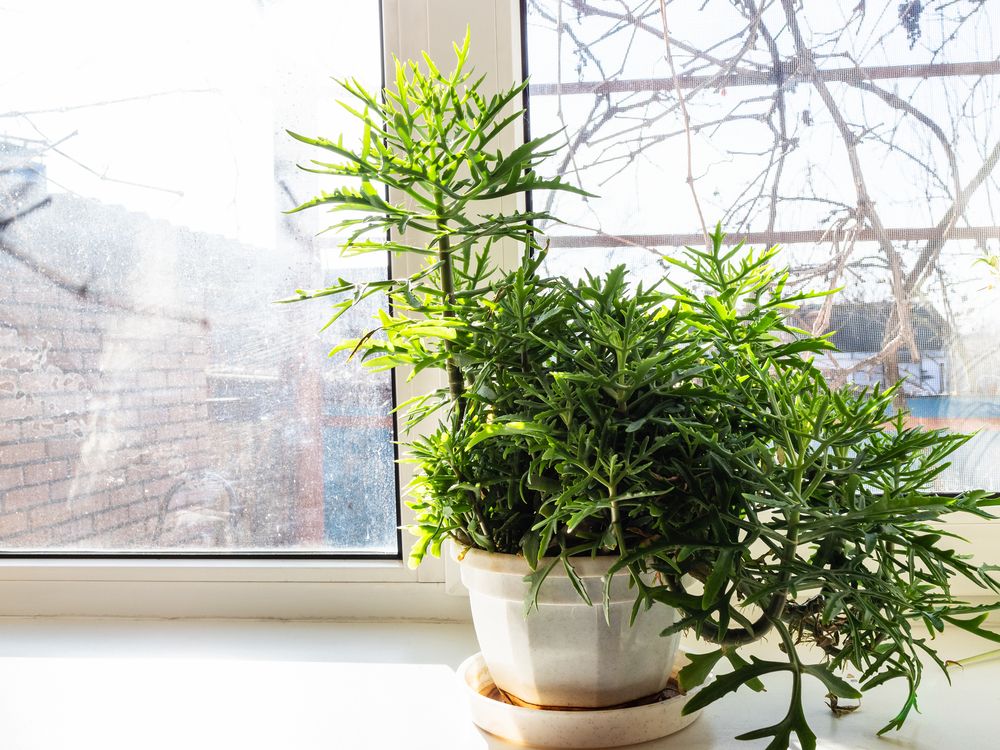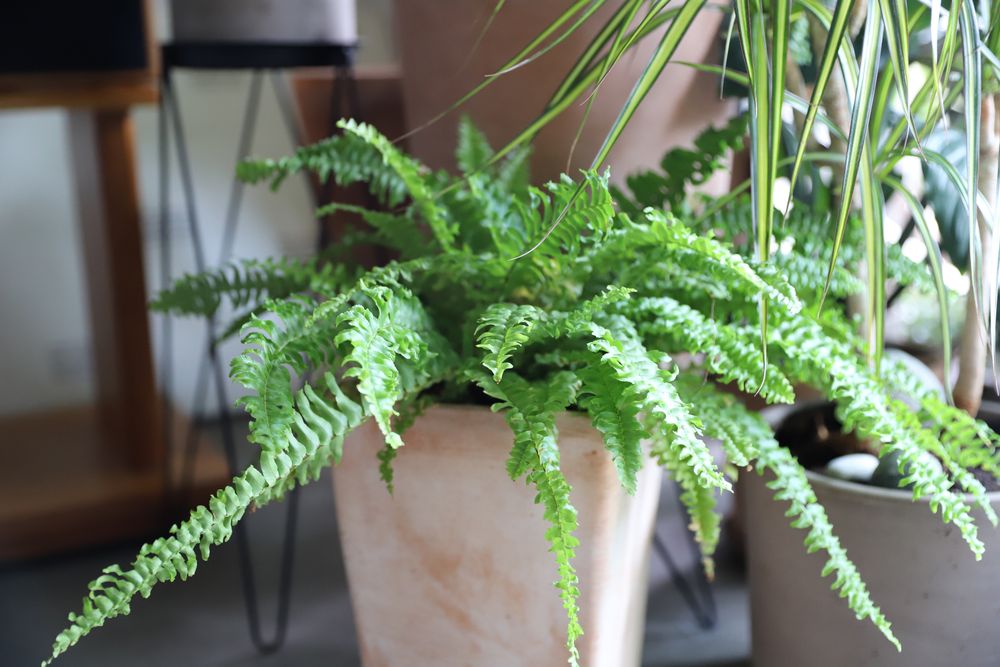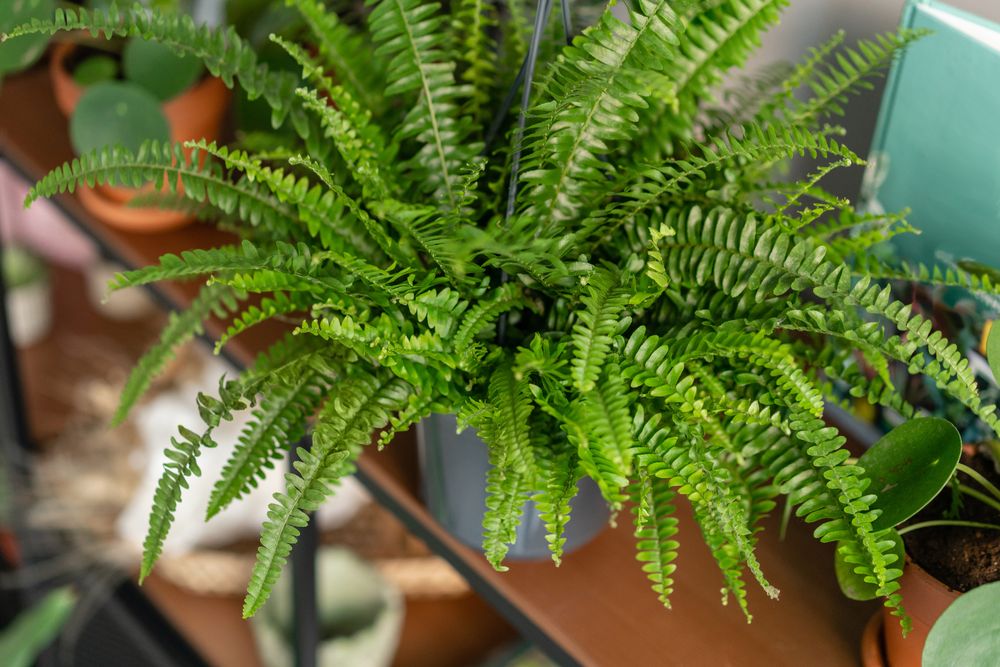7 Fern Varieties And Types To Grow At home
The humble fern is one of the most widely cultivated plants in homes and gardens all over the world. So what makes them so popular? Well, for one thing, they come in different shapes, sizes, and colors. With over 10,500 species to choose from, you can have a fern corner in your house, or turn every corner into a fern corner.
Ferns are delightful plants that defy any categorization. They can be dwarfish rising only an inch or two over the ground or they could tower over 75 feet tall. Some are evergreen while other species are deciduous. When mixing and matching your ferns, you can pair the evergreen types together or add an evergreen species or two to a deciduous bunch to liven things up.
And did we mention that ferns grow both indoors and outdoors exceptionally well? Nothing it seems can beat ferns in versatility, diversity, and adaptability.
Fern Types
The first ferns emerged around 360 million years ago in the heyday of the dinosaurs. After those giant beasts went extinct, ferns continued to spread and diversify to adapt to every microclimate. This led to more fern species evolving over time. Some of those species looked nothing like the original ferns. And with the changed looks, new qualities emerged as well to help the ferns survive the harsh conditions around them. This explains why we have four fern types today.
- Evergreen: The most popular type of fern. This variety doesn’t lose its green leaves in the winter nor does it go into dormancy. However, the plants will not grow from the fall until the next spring and will hardly have new shoots or leaves in the winter. Still, it’s a wonderful addition to your garden or home especially when all other plants are dormant.
- Semi-Evergreen: Not exactly evergreen ferns, but not totally deciduous either. These types fall somewhere in between. They might lose their foliage, but not all the leaves would fall. They might become dormant, but only for a short while before they bounce back with new growth and leaves even in the middle of the winter.
- Deciduous: This type of ferns acts like most other plants. Come fall, the leaves turn golden or brown then fall before the winter. The barren stems give no indication that the plant is alive or that it will come back in the spring. But that’s because the fern is dormant. Some pruning and winter preparation is required for these deciduous perennials.
- Herbaceous: These ferns have no wood stems that remain after the plant loses its foliage. By the end of the fall, all traces of the plant are gone. Only the roots remain in the soil waiting patiently for the spring. That doesn’t mean that the plant is gone forever. Just mark the spot in your garden and don’t throw away that pot. Your herbaceous fern will roar back to life with fabulous foliage and striking colors once spring comes a-knocking again.
Fern Varieties
Whether you prefer evergreen ferns or the ones that disappear into thin air during the winter then sprout back miraculously in the summer, there are so many fern varieties to satisfy every taste and decorative need. Because of the space limitation, we’ll just focus on the most popular and exotic fern varieties to grow at home.
1. Boston Fern
The Boston fern is one of the easiest ferns to grow and care for. Although you’ll find it in front of people’s porches, this fern doesn’t like direct sunlight. In fact, it prefers cooler places in your house where the light is medium to bright.
The leaves of this fern are long, arching, and light green. It grows well in a pot as well as in a hanging basket. The soil can be loamy or a general-purpose potting mix. As long as it’s well-draining, the fern will not complain.
Humidity is another prerequisite for the Boston fern. If your fern starts to wilt and the stems wither away and die, that’s probably because the air in your house is too dry. Misting the plant twice a week will solve this problem. If you don’t have the time or inclination to mist the fern, place the pot on a tray full of water and some pebbles to keep the roots from touching the water. Change the water regularly to prevent mold and bacteria buildup.
2. Cinnamon Fern
When you get tired of all the prevailing green color in your garden or house and want to spice things up, plant the cinnamon fern in a pot and watch its dramatic color transform the setting. With fronds alternating between green and cinnamon, this fern is a true showboat. What better way to stand out among all these ferns than with a change of color?
Like some fern varieties, the cinnamon fern has a low tolerance for cold weather. It doesn’t do well with frost so you’ll need to bring it indoors before the first frost in the fall. Time your planting to be after the last frost in the spring.
That said, it is an adaptable fern that can tolerate all types of soil. Even wet soil will not dampen its appetite for growing and spreading its cheerful colors in a dark and wet spot in the garden. It’s a wonderful ground cover plant thanks to its hardiness and colorful fronds.
3. Staghorn Fern
The origins of the name are not clear but you don’t need a reason to grow the staghorn fern at home. One of the fast-growing ferns, once the rock-like crown develops, you won’t need to keep it buried in the soil or any other growing medium. Simply nail the crown to a board so it won’t roll away and leave it like that. The leaves will spring out of every angle of the crown and give it an otherworldly look and feel.
You might even consider nailing it to the wall or the ceiling of a shed or the greenhouse. There’s a lot you can do with the staghorn fern. That way you won’t have to worry about repotting it twice a year or changing the soil every so often.
Mounting the staghorn fern cuts down the care and maintenance work by half. It also helps you avoid common problems such as overwatering the plant. To water the mounted staghorn, simply drizzle water all over the crown and board until it gets damp. Don’t water it again until the surface of the fern dries out completely.
4. Bird’s Nest Fern
The descriptive name tells you all you need to know about this exotic fern. An epiphytic plant, this fern has no need for soil. It simply attaches itself to a tree trunk, a moss-covered log, or even a rock and continues to grow and prosper.
The fronds of the fern don’t look anything like your average garden-variety fern fronds either. They’re more like leaves with their light green colors and absence of feathers. The edges of the leaves are wrinkled which gives the plant a dynamic appearance. The fronds surround the middle of the fern which looks like a bird’s nest in every way except the lack of eggs and bird feathers.
So instead of wasting time and hard work on growing the plant in a pot, why not just mount it. Just like the Staghorn fern, you can attach this fern to a wall or a tree and watch it spread out its lush green fronds.
Keep these ferns from direct sunlight. This is why you should mount them on the trunk of the tree just below the canopy. It practically feeds itself and doesn’t need any fertilizer to grow.
5. Holly Fern
You’ll often find this fern growing in dark corners of the garden and filling up a remote corner in an office or dimly lit room. That’s because it favors full shade over the partial sun and can survive even in dark spots where only little light comes in.
Despite this propensity for the dark side of any location, the Holly fern has glossy dark green leaves that shimmer and reflect any light that falls on them. It’s the kind of hardy fern that grows in just about any spot you place it in. The only exception to that rule is cold temperatures.
When the temperature drops in the winter, the plant will struggle to survive. It might drop its leaves and the lush fronds will wilt and wither. To save your fern, bring it inside and keep it in a warm and humid place throughout the winter. It will regain its green luster in no time and continue to grow. In the spring, you can take it outside again.
6. Australian Tree Fern
So far we have been exploring small evergreen and deciduous ferns. But it’s time to expand our horizons and go big. Meet the Australian tree fern. A fern by name but really a tree by designation. It averages 40 feet when growing in its natural habitat in Australia. However, that shouldn’t stop you from growing it as a houseplant. All you need is regular pruning to cut it down to about 5 to 7 feet if you so desire.
Despite being designated as a tree, this fern doesn’t have flowers or fruits. Its green fronds don’t change color in the fall nor fall in the winter. So why is it called a tree? It’s the trunk that looks like a palm tree trunk. When the fronds die of old age, they fall leaving behind a stub that becomes a building block on the trunk. With time, the trunk grows taller and thicker while the canopy remains slender and frail at the top.
And unlike other ferns, this fern tree thrives in full sun as well as in partial shade. It does need a lot of watering though and dry weather can prove to be fatal for the young plant. So only grow it in your garden if you’re blessed with exceptionally humid summers and warm winters. Florida, parts of Texas, and Southern California are all ideal locations for this fern from Down Under.
7. Asparagus Fern
You can think of asparagus fern as tiny Christmas trees growing in the garden. Or it might remind you of the hair of Psycho Bob from The Simpsons. Only the psycho ferns are actually green, not maroon. Whatever the asparagus fern looks like it’s definitely not asparagus. But plants often get bizarre names for no apparent reason.
Asparagus fern is a natural air purifier and filter that absorbs toxins and chemical pollutants out of the air. So you can grow it in a room to keep it smelling fresh and improve air quality. Besides its bushy and wild green fronds, the fern also has tiny white flowers. They don’t stay in bloom for long and soon fade whether they get pollinated or not. If pollinated, red berries will replace the flowers. You can plant those berries to start new ferns.
One thing to keep in mind is that this is not a child-friendly plant. If you want to grow it as a houseplant, keep it out of the reach of children. Those bushy fronds are anything but soft. In fact, they’re little thorns covering the length of the frond. I recommend keeping the fern in a hanging basket where it will purify the air without harming anyone. Regular misting is required if humidity levels drop below 50 percent in your house.
